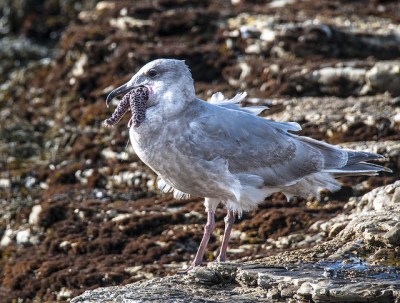Courtesy of Jerry Kirkhart via Flickr CC.
Joe Gaydos was quoted in a New Scientist article about the implications of diet changes for gulls. In a recently published paper (find a link to it in the New Scientist article, below), UBC's Louise Blight and collaborators looked at feather samples to understand how gull diets have changed over the past 149 years. The results show that as the birds' diets have changed from fish to more garbage, the result has been population declines and lower fertility in glaucous-winged gulls.
Overfishing has meant that one of the gulls' favourite fish species, the highly nutritious eulachon, is now considered threatened in the Salish Sea area. Another former staple, the Pacific herring, no longer forms the large aggregations that gulls once feasted on.
SeaDoc recently published a study about population declines in diving birds. This study linked the highest risk of population decline to birds with very specific diets involving forage fish like eulachon and herring.
In the article, Joe Gaydos is quoted: "[Gull] populations should not decline as quickly as specialist feeders. The fact that generalists like gulls could be in decline is definitely worrisome."
Read the article, which has a link to the published paper.

